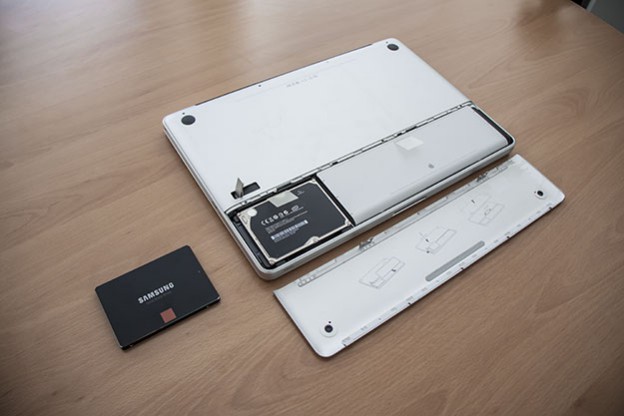
#BEST SSD FOR MAC PRO 2010 PC#
The earliest Eee PC netbooks were notorious for having this problem.1 hours ago 1. The earliest SSDs had very poor random write characteristics, leading to very slow application installs and frequent computer pauses. What it means: This measurement expresses the ability of an SSD to write data that is not contiguous, such as virtual memory, cache and history files.īenefits: An SSD with a high random write score installs applications quickly and does not cause the computer to stall momentarily during small changes to the virtual memory or various cache and history files. Applications and game levels load dramatically faster than they would with a conventional hard drive. What it means: This measurement expresses the ability of an SSD to read data that is not contiguous, such as several small files.īenefits: An SSD with a high random read score starts up quickly, going from a fully-off state to being ready to use in seconds. What it means: This measurement expresses the ability of an SSD to write contiguous data, such as a single large file.īenefits: An SSD with a high sequential write score can quickly write a large file, decreasing the amount of time needed to save an open project such as an image, video or audio file. What it means: This measurement expresses the ability of an SSD to read contiguous data, such as a single large file.īenefits: An SSD with a high sequential read score can quickly load a large file from the drive to memory, decreasing the amount of time needed to open a large image, video or audio file for editing. In this section of the article, we explain what those terms mean, and why they might be important to you. The performance of an SDD can be expressed with four primary terms. Random Write: 51.4 MB/sec Glossary of SSD Performance Terms

See below for a glossary of terms such as “Sequential Read” and “Random Write” and to see how these terms benefit you. All benchmark results are correct to the best of our knowledge and sourced from the links given at the end of the article. The Best SSD Upgrades for the MacBook ProĬlick a link to proceed to the product page for that item.
#BEST SSD FOR MAC PRO 2010 UPGRADE#
We believe that a fast SSD is the best upgrade that anyone can purchase for their MacBook Pro or MacBook. Today’s SSDs often hold a great deal of data, and if you need additional storage, an external hard drive can more than make up the difference. The trade-off is that SSDs tend to hold less data than hard drives, and cost more. An SSD, therefore, has the ability to be dramatically faster than a conventional hard drive. Therefore, an SSD can access information on any part of the media instantly, while a hard drive must wait for the platters and read/write head to reach the correct positions. SSDs, meanwhile, store data on flash memory rather than magnetic platters. However, hard drives will always be limited by the fact that they have moving parts. Hard drive manufacturers have increased the performance of their products by increasing the density of the data packed on the platters, increasing the rotational speed of the platters, adding high-speed cache memory and improving hard drives’ internal data fetching algorithms.

As the platters spin, a read/write head moves in and out, like a record needle, to read and record data. A hard drive contains metal rotating platters that store data magnetically. The conventional hard drive has been the main form of mass storage in computers for many years. The SSDs that Apple offers for the MacBook Pro tend to be expensive and perform poorly compared to the best SSD upgrades available from third-party manufacturers, so your best bet is to purchase a MacBook Pro with a conventional hard drive and upgrade it with an SSD yourself. However, the MacBook Pro still has an advantage its hard drive is the standard 2.5-inch size, which means that you can remove and replace it with the SSD of your choice.
/MacProHDSled-571526253df78c3fa2d0b4de.jpg)
In fact, the MacBook Air feels like a faster machine in some applications because it includes a solid-state drive (SSD) by default. However, because the Sandy Bridge MacBook Pros include conventional hard drives by default, they aren’t quite as quick as they could be.
:max_bytes(150000):strip_icc()/MacProDriveTray1-57152b5d3df78c3fa2d1f997.jpg)
Apple has released an incredibly fast line of notebooks with the new Sandy Bridge MacBook Pro series.


 0 kommentar(er)
0 kommentar(er)
